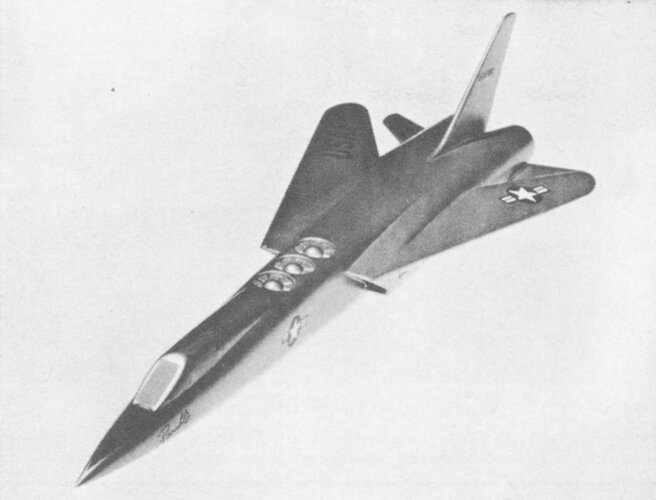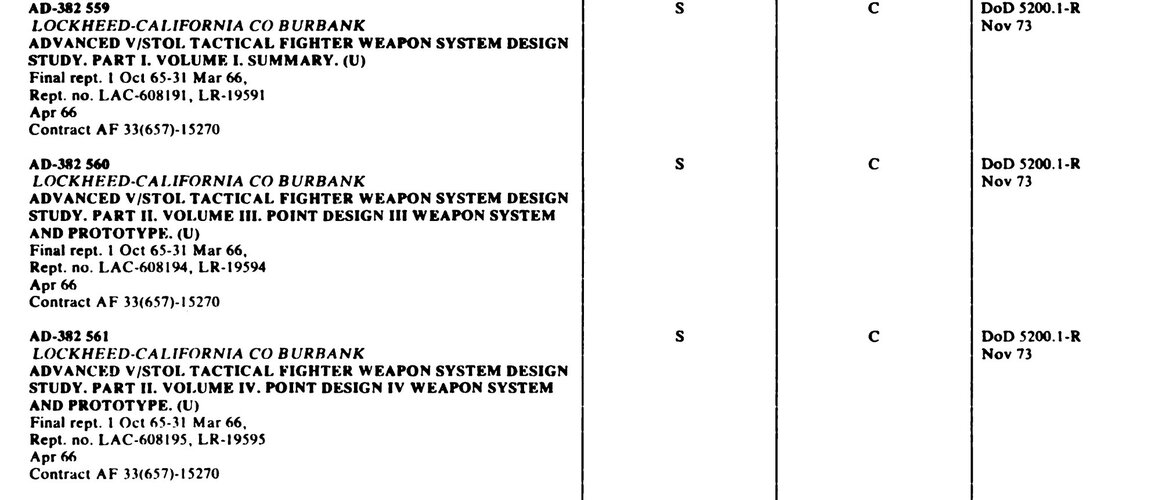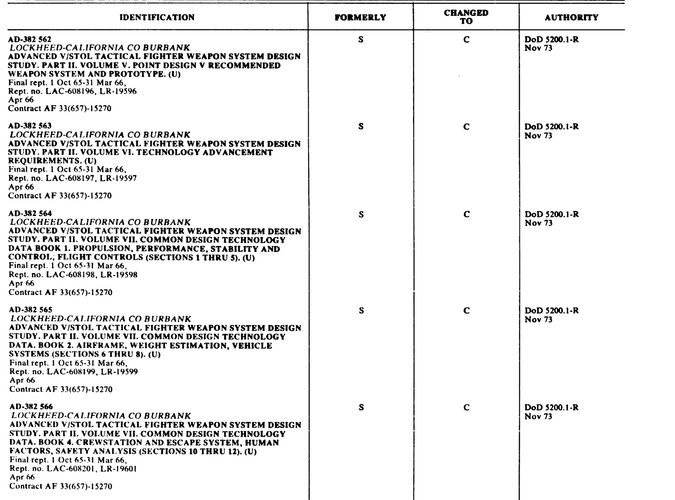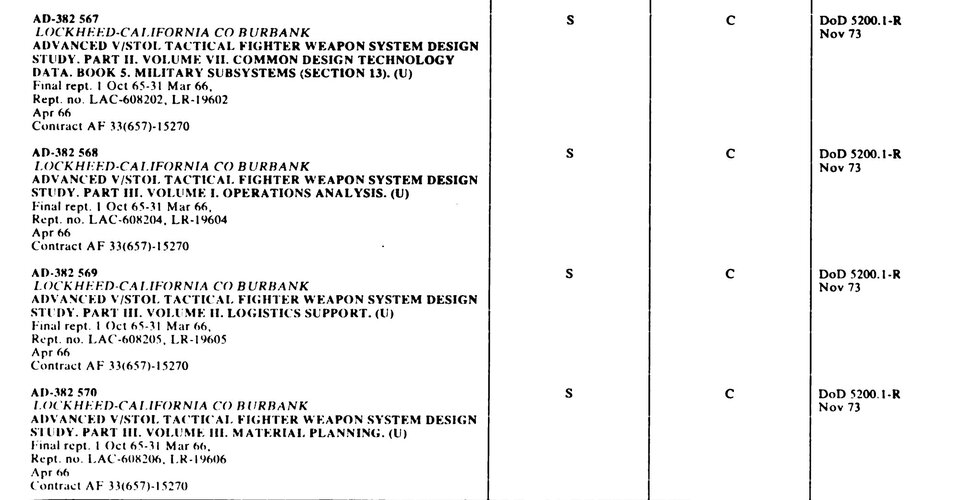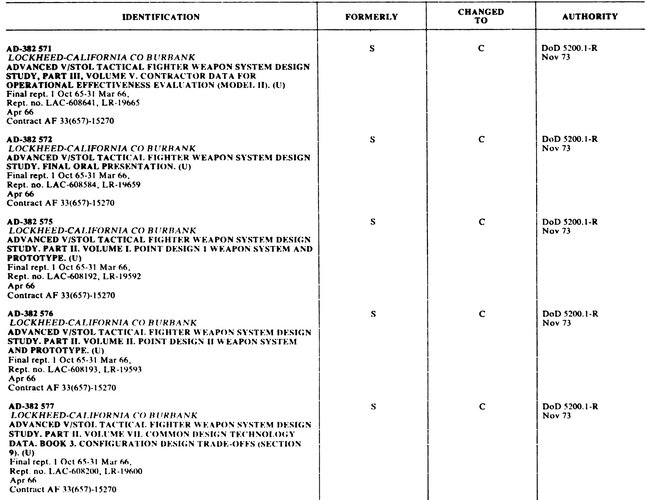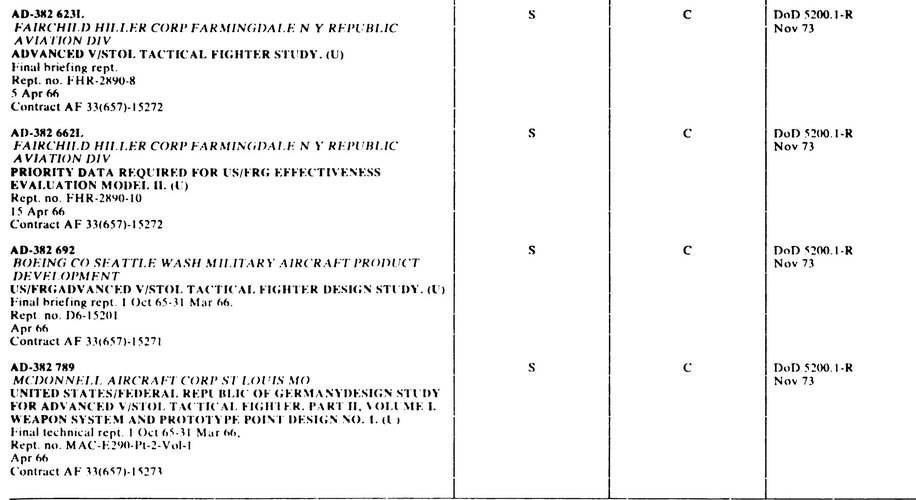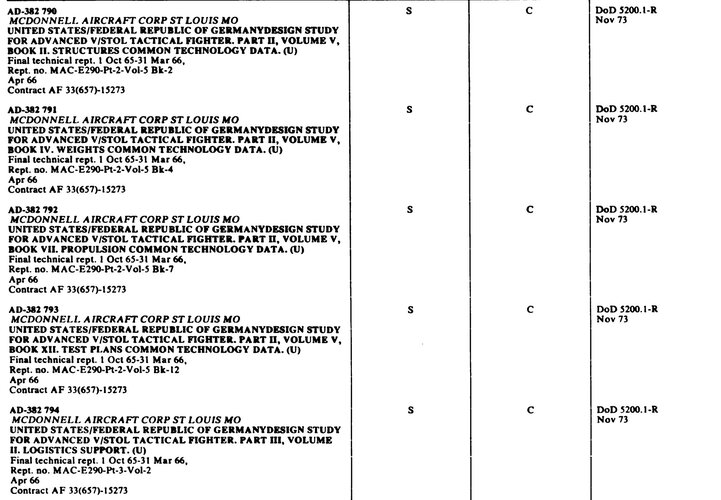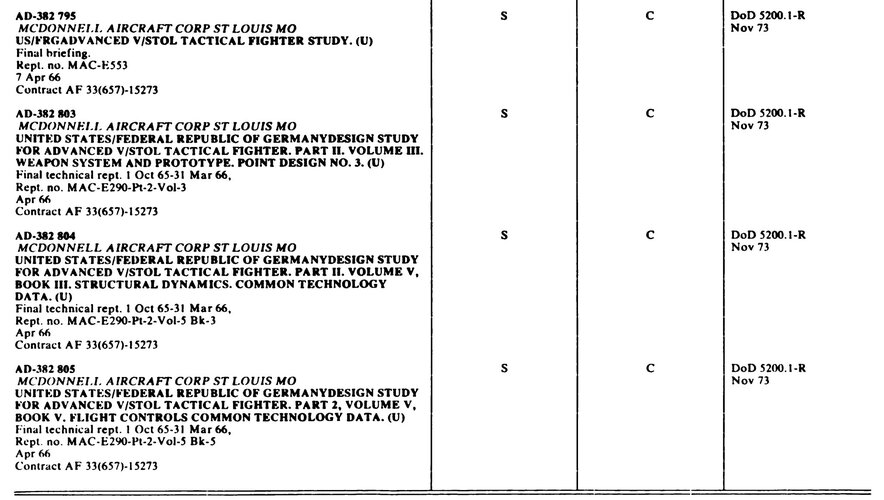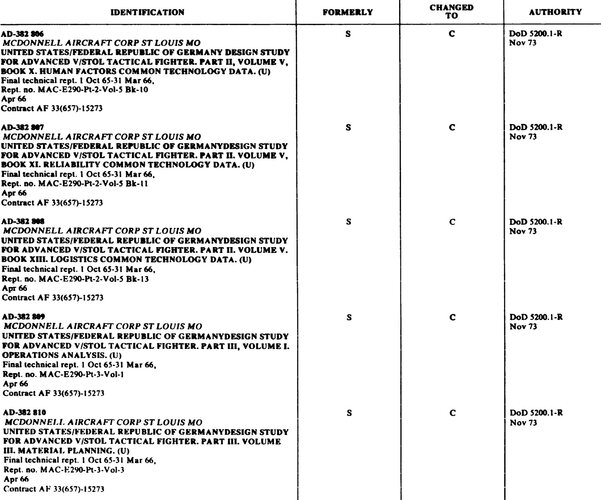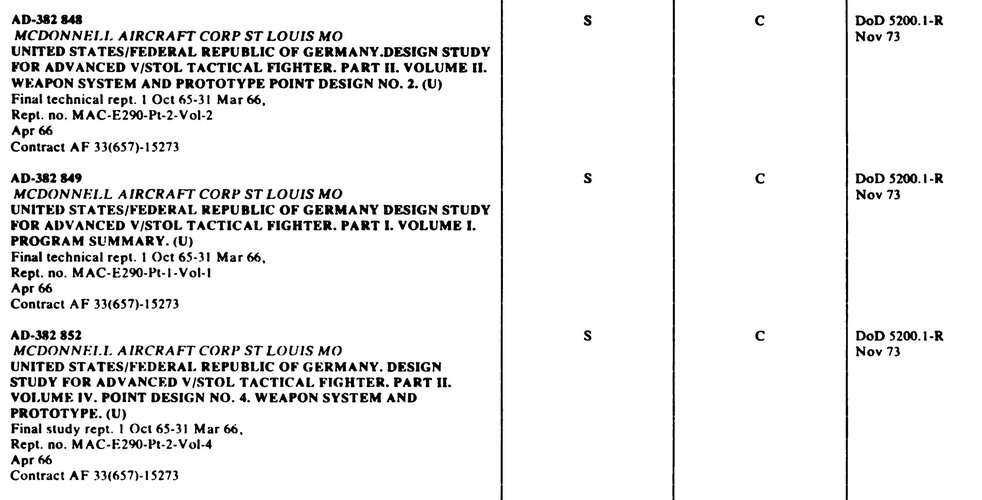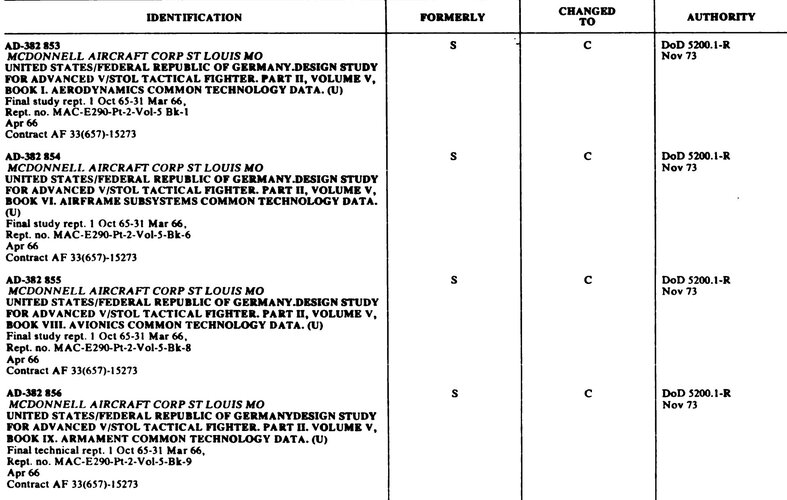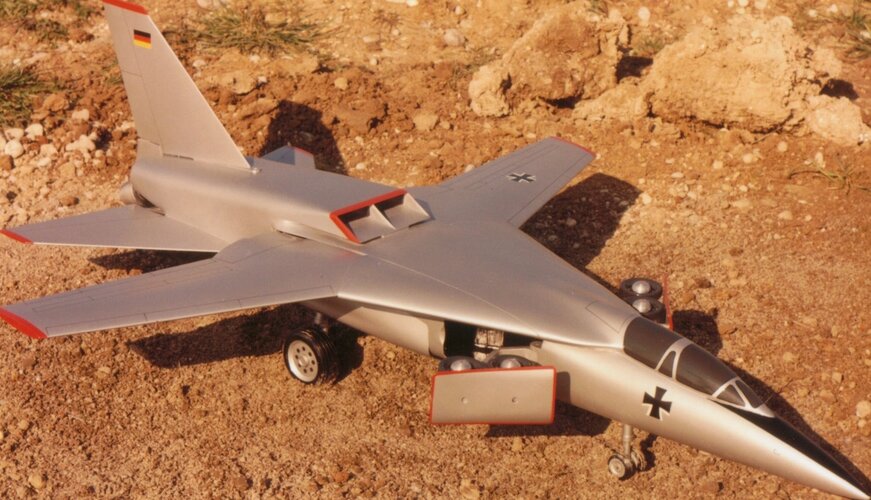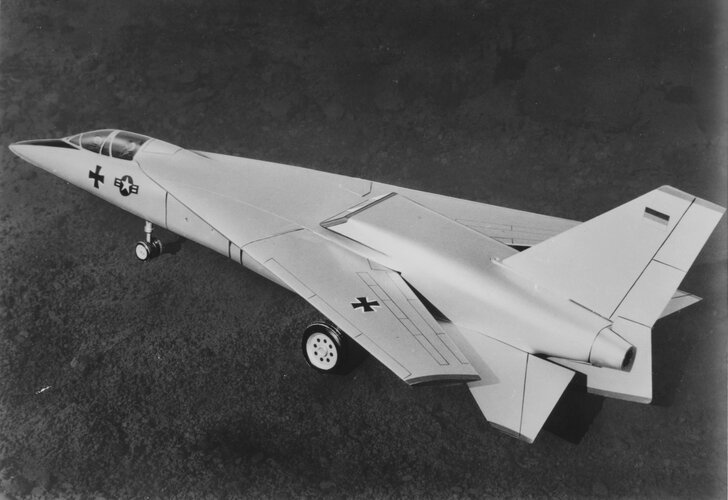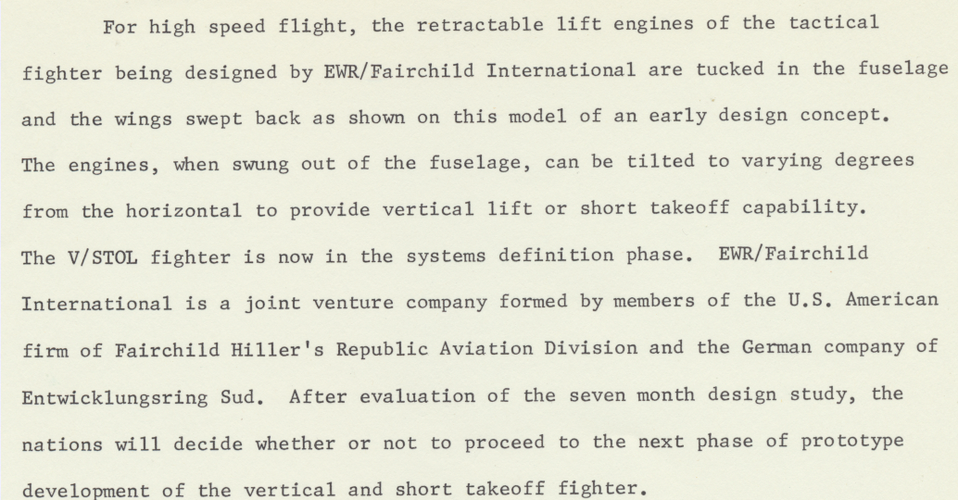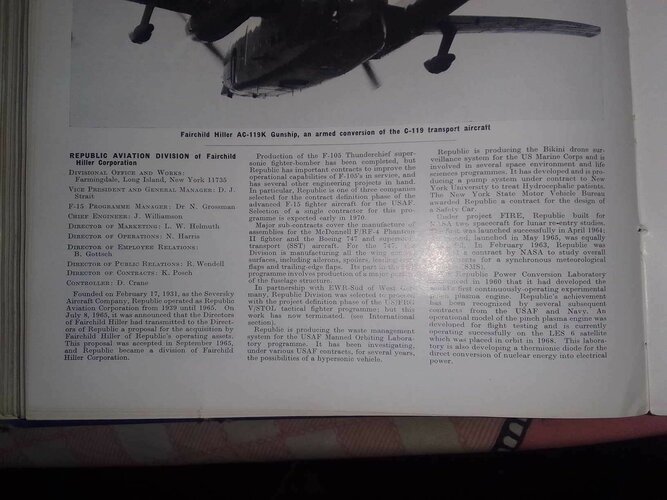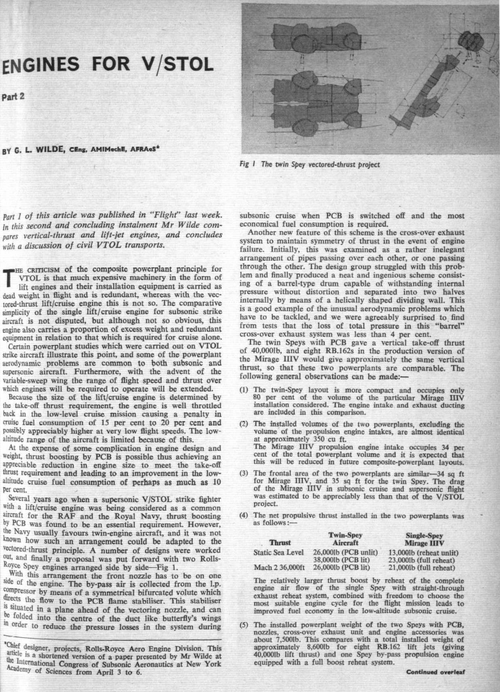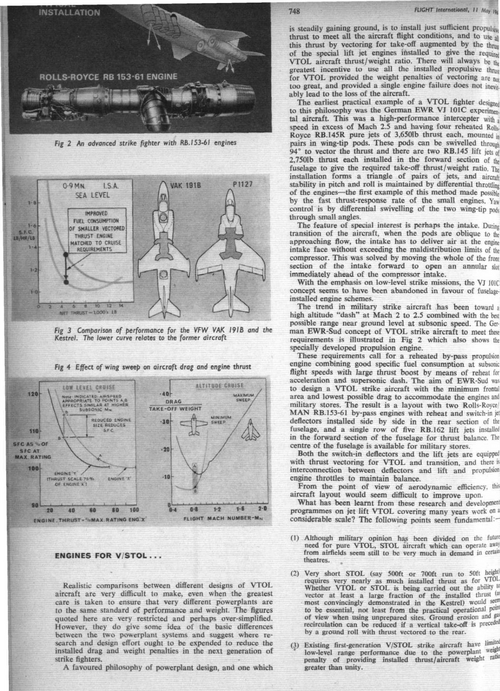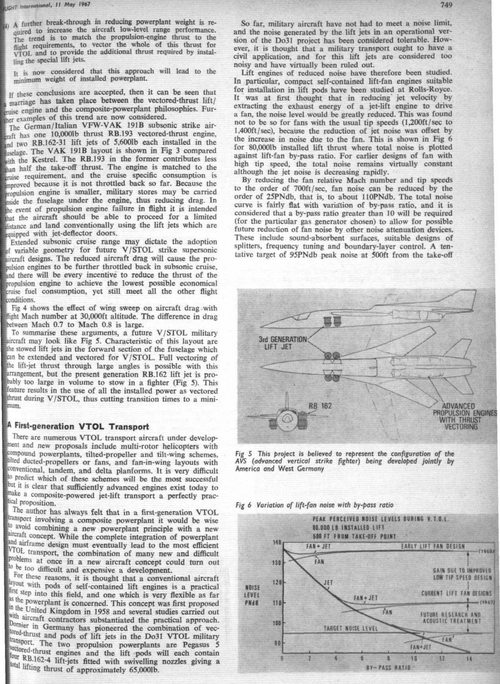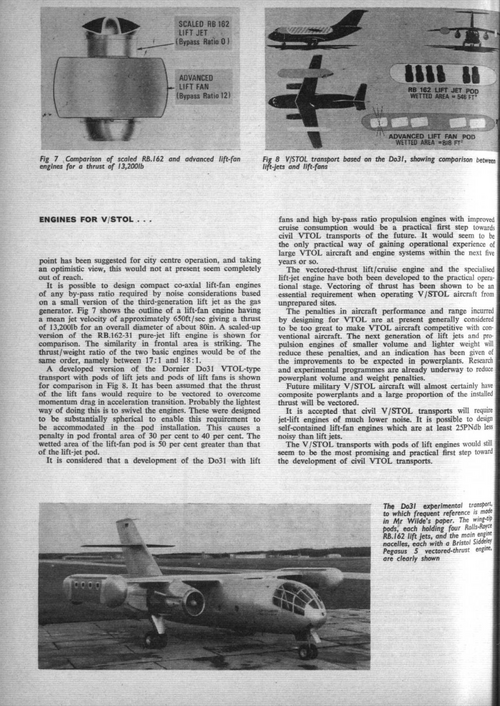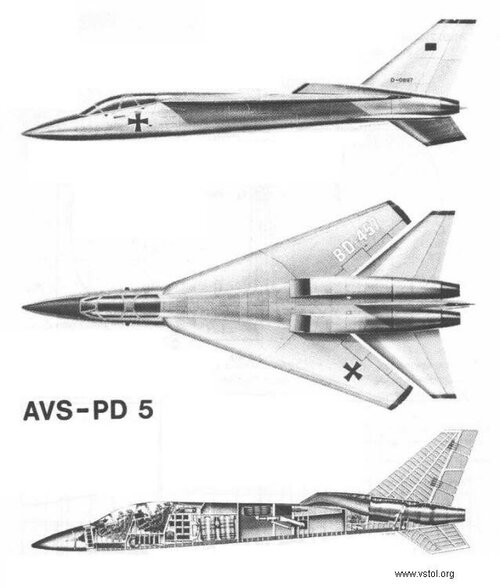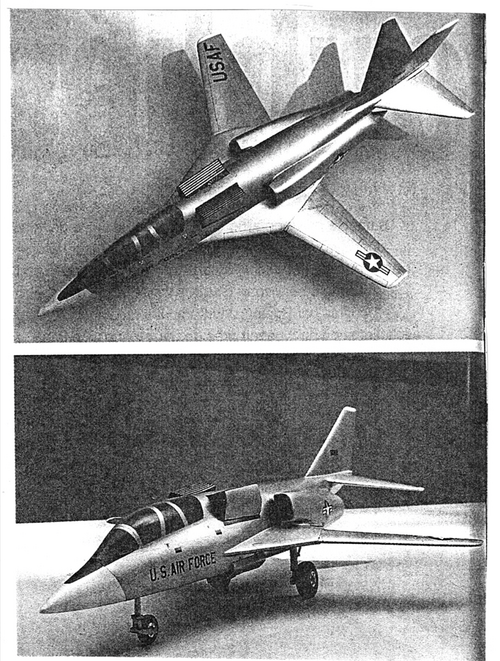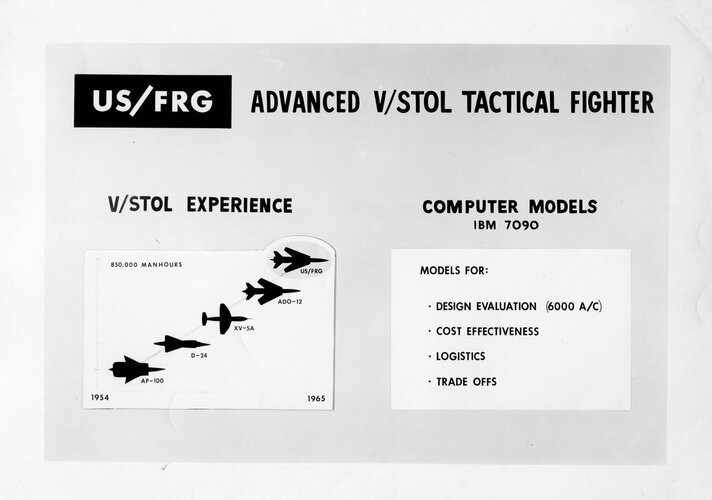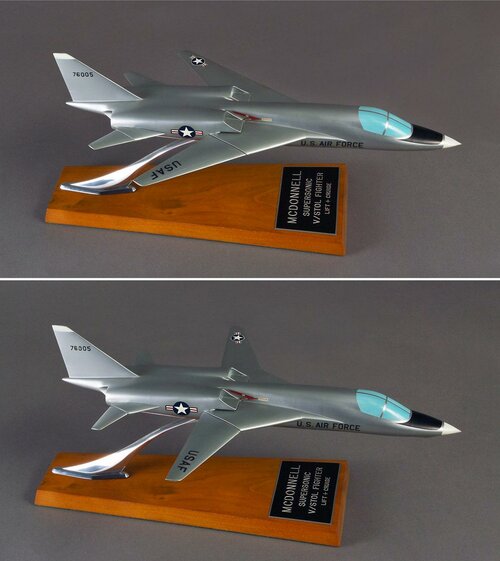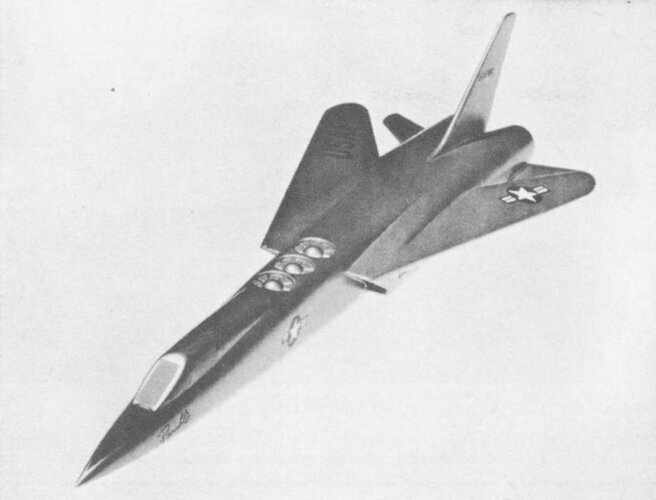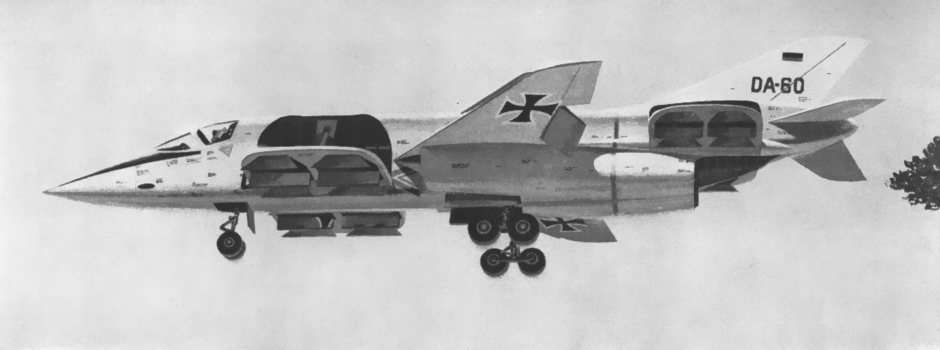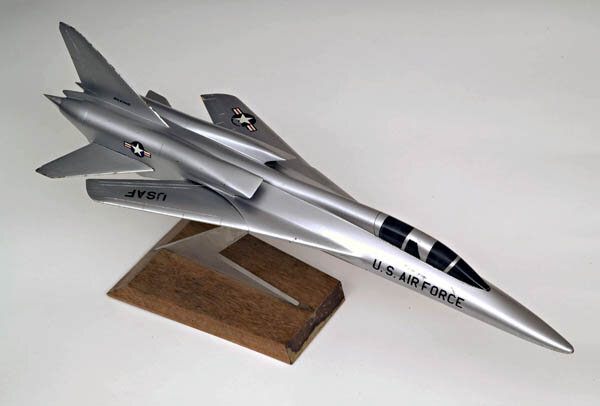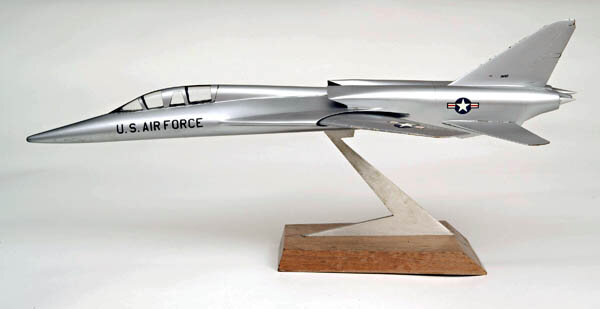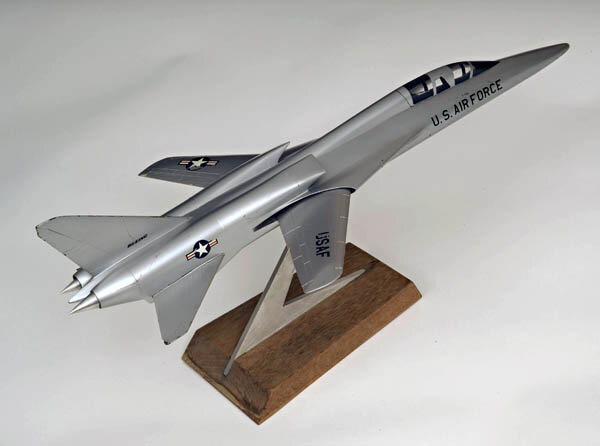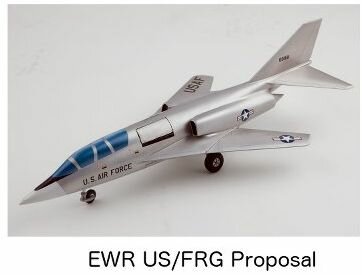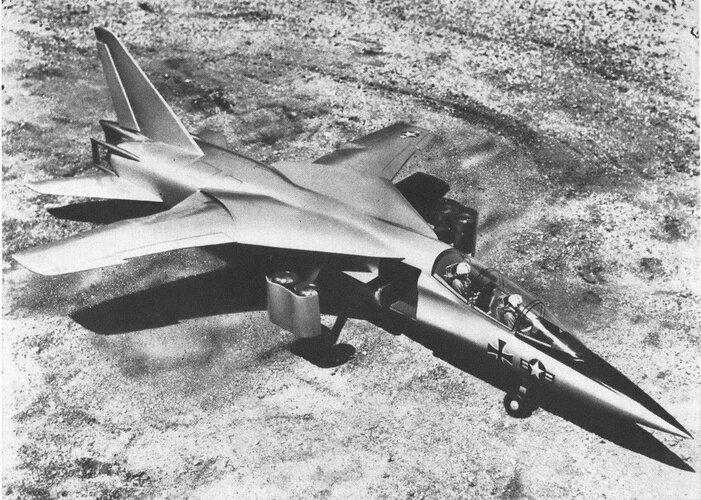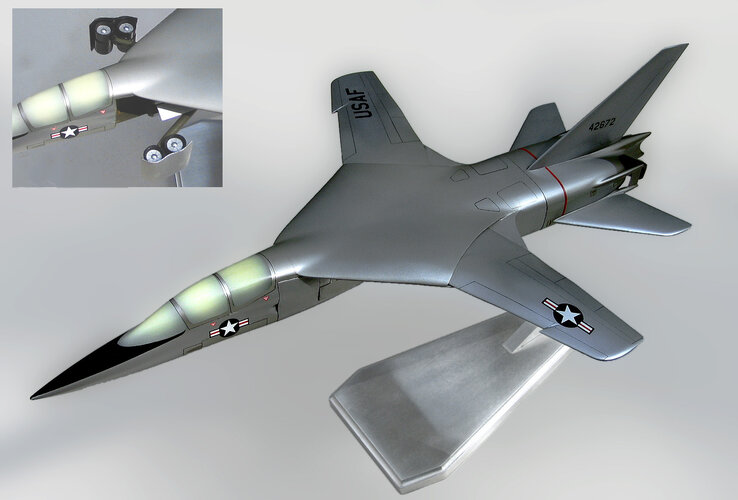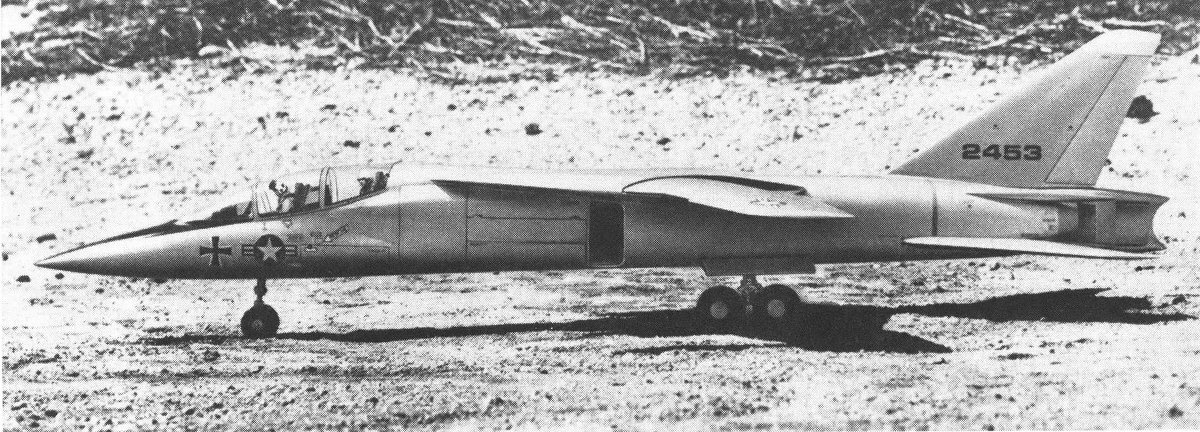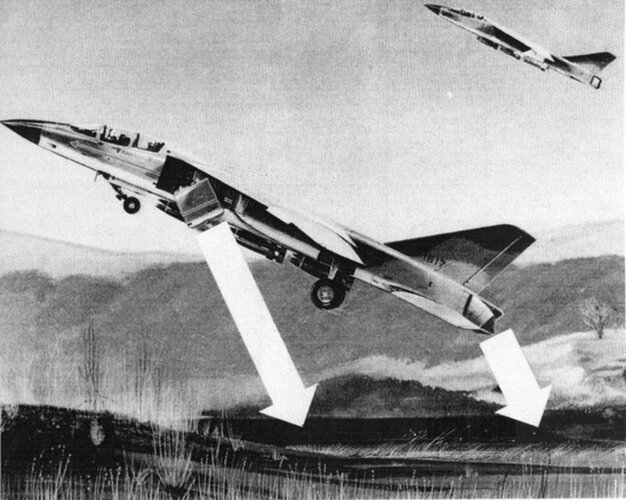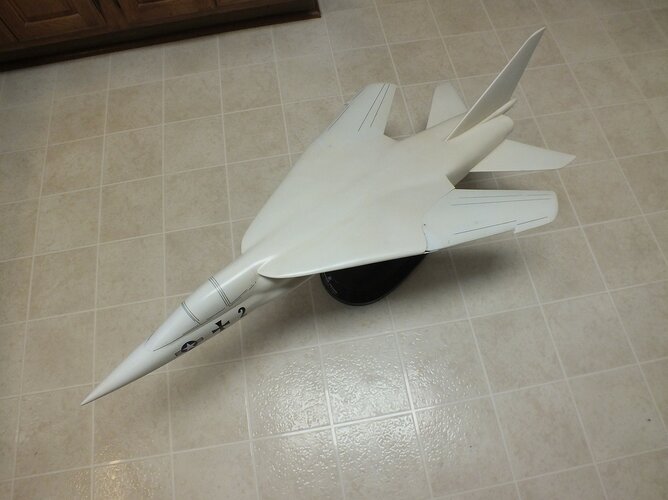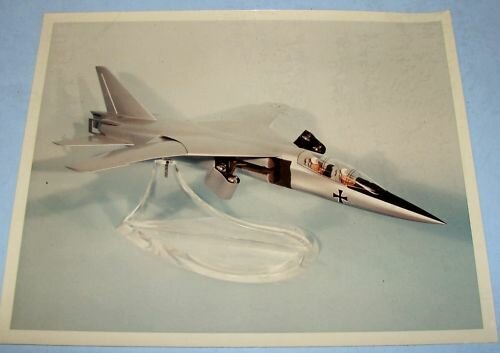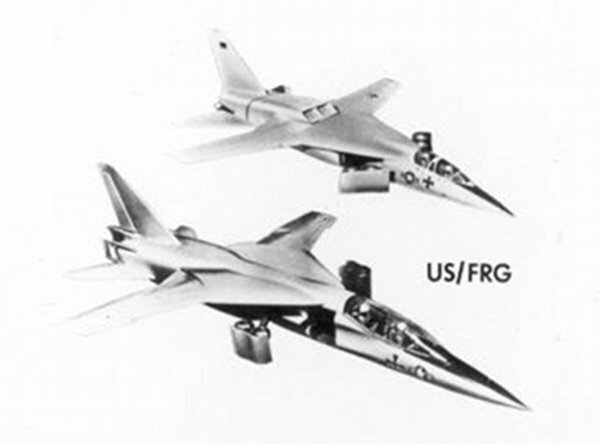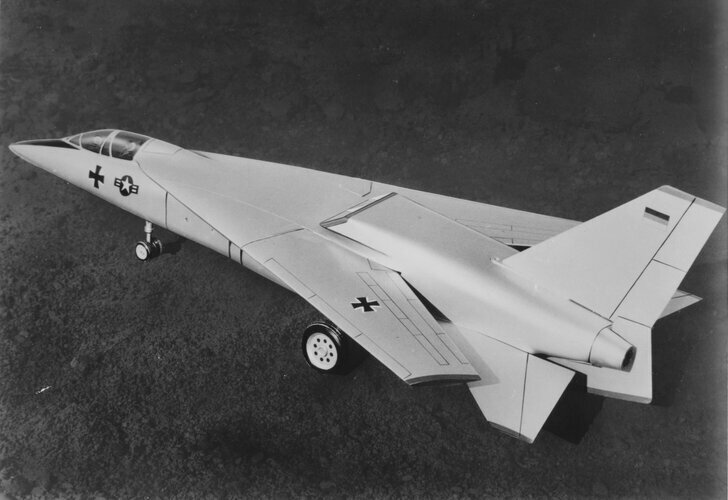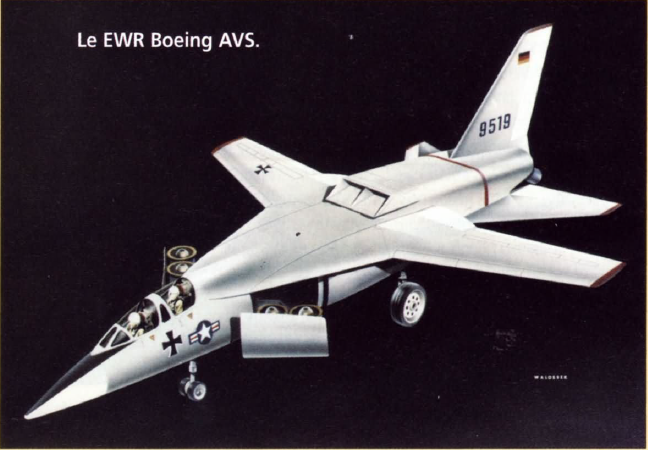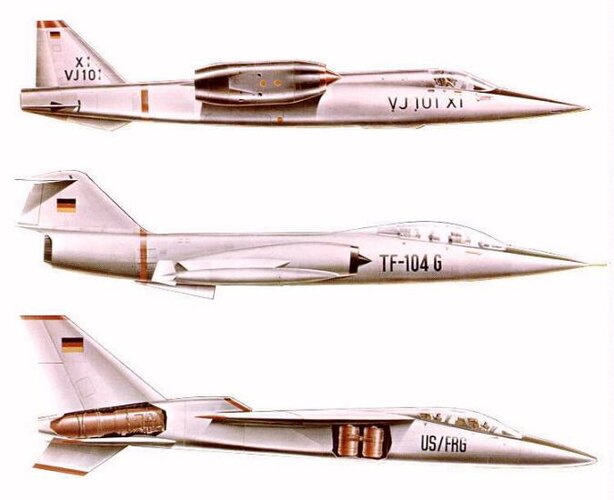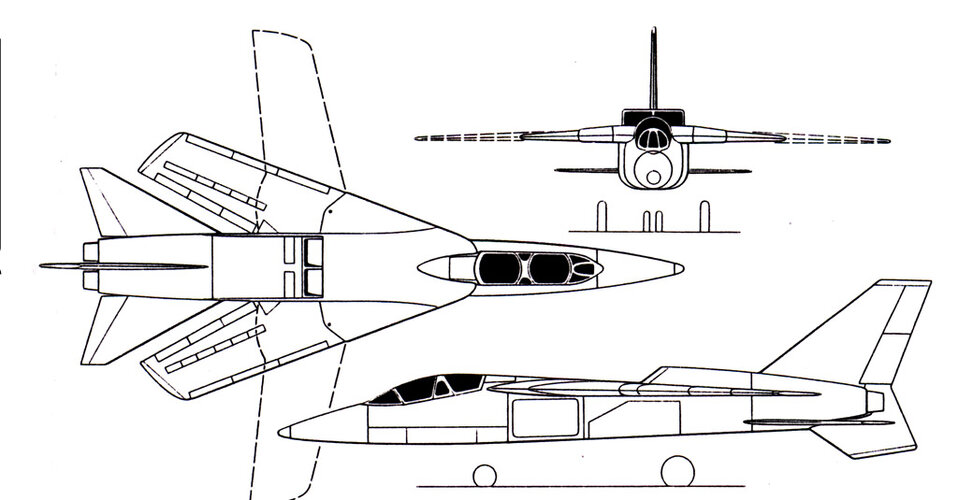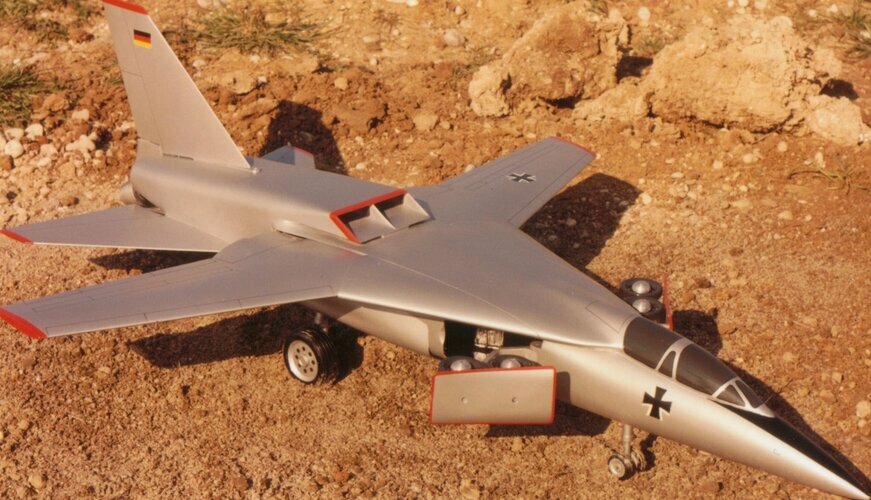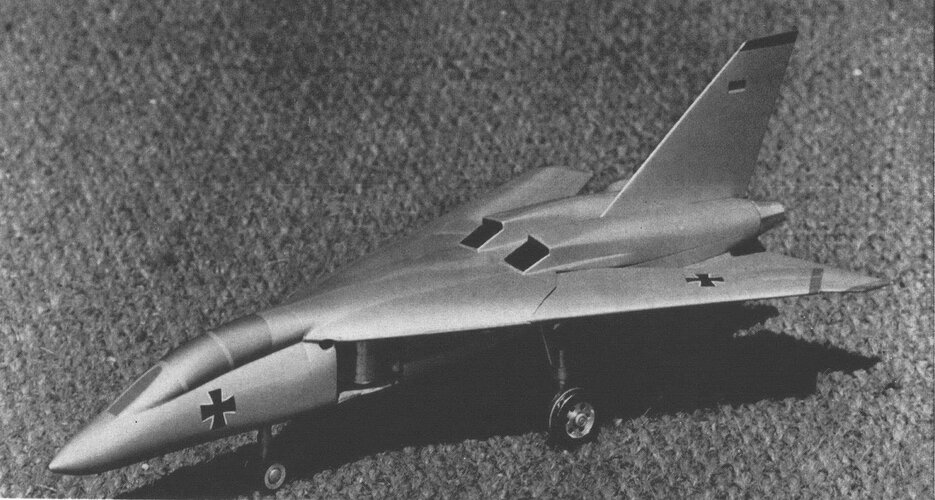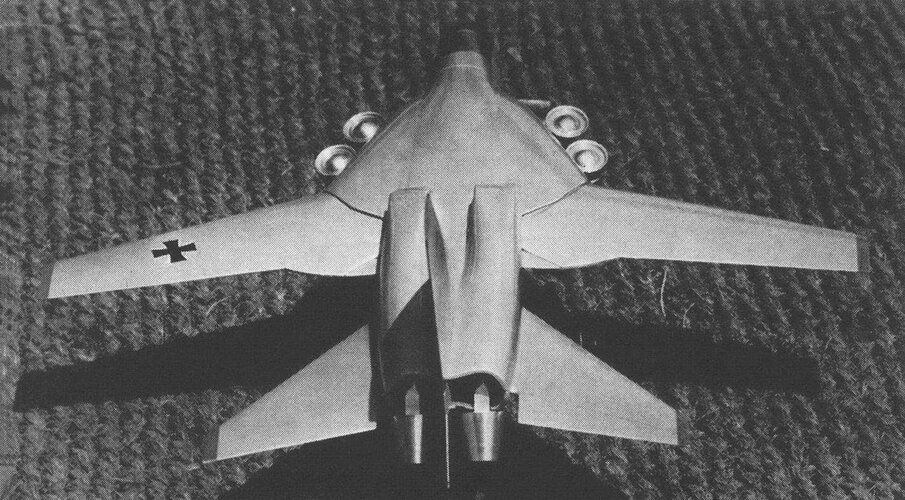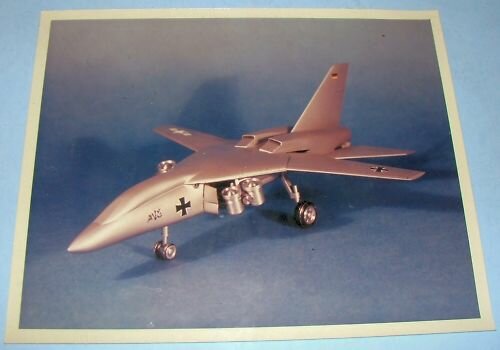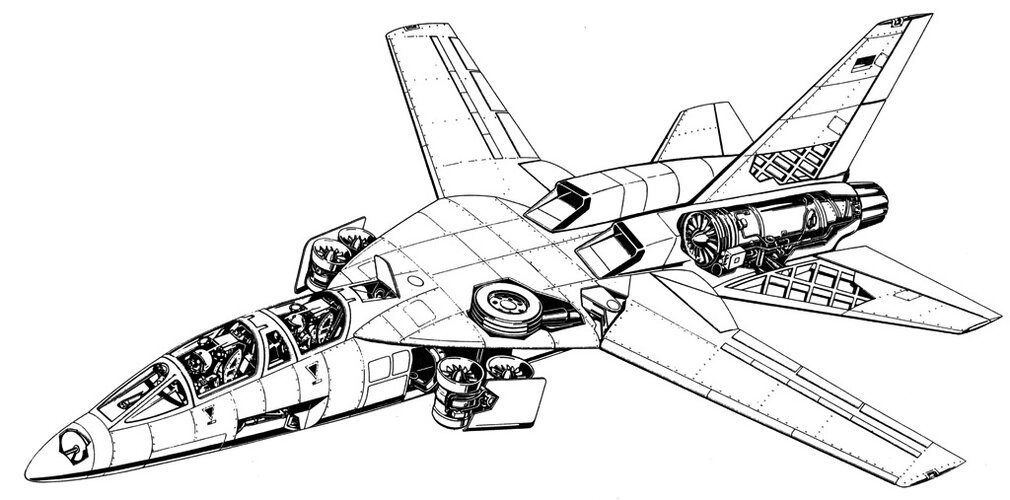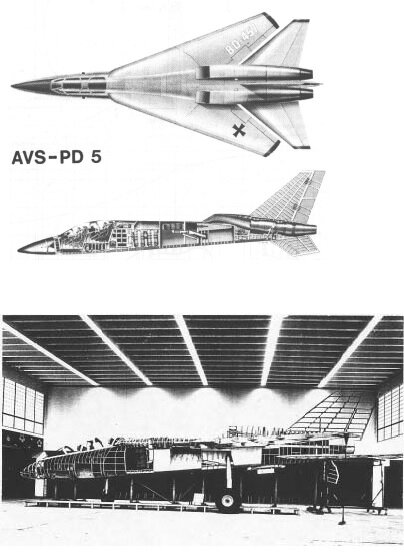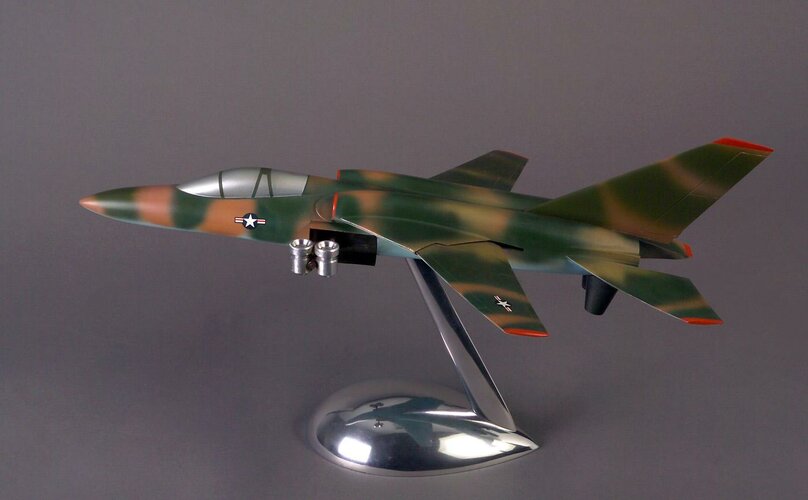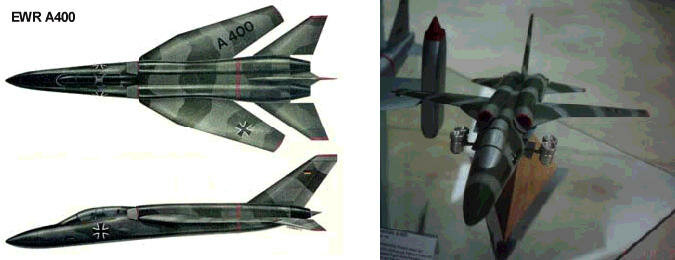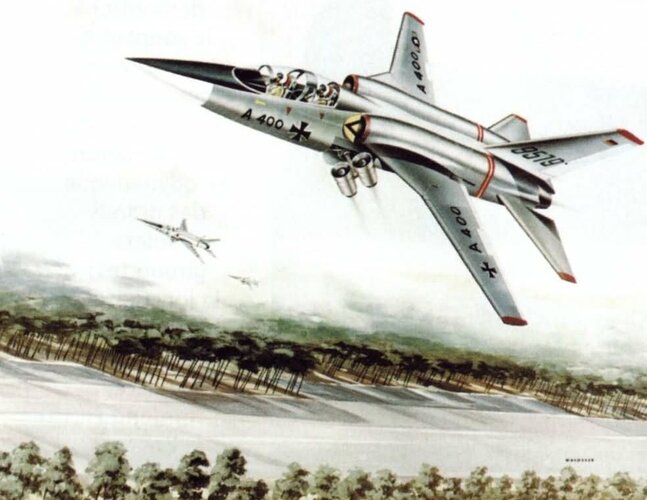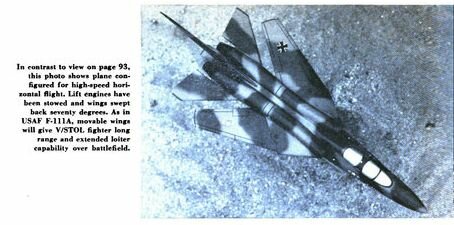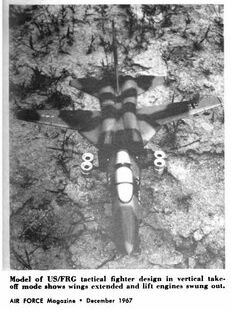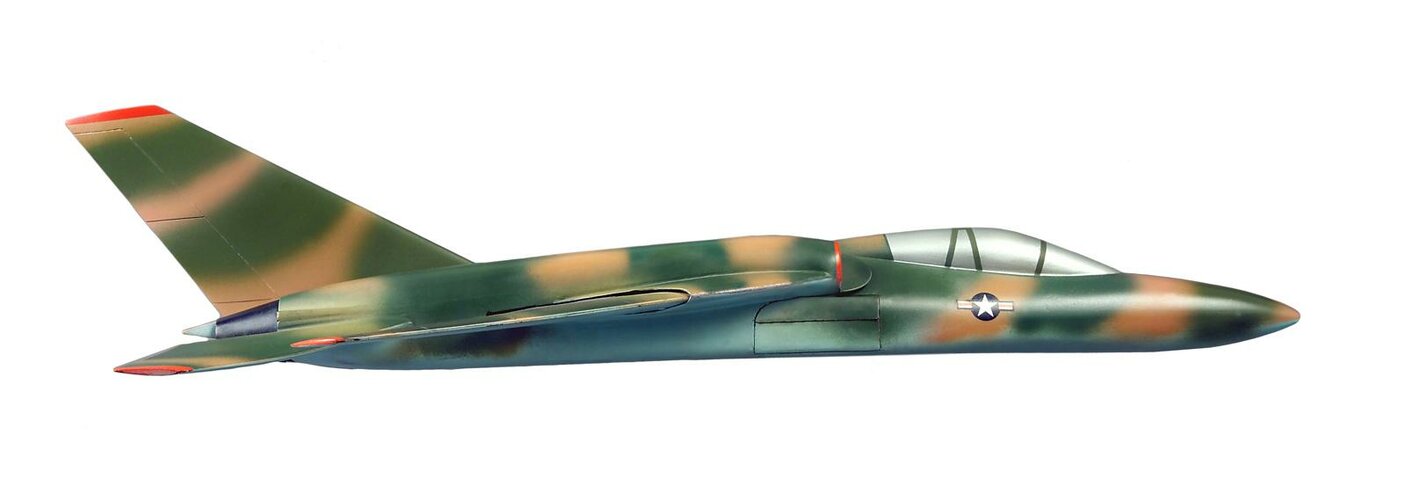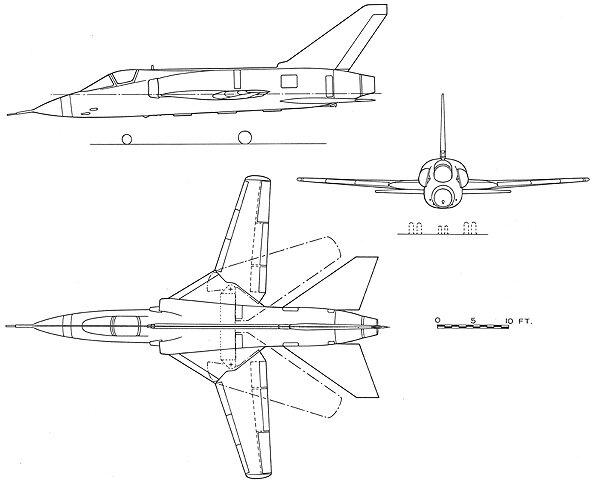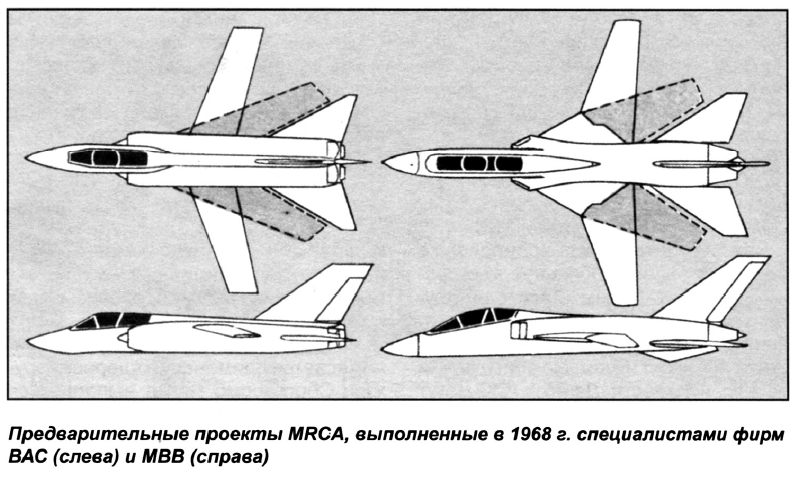You are using an out of date browser. It may not display this or other websites correctly.
You should upgrade or use an alternative browser.
You should upgrade or use an alternative browser.
ADO-12 to "US-FRG" AVS V/STOL Fighter Programs
- Thread starter overscan (PaulMM)
- Start date
- Joined
- 27 December 2005
- Messages
- 17,749
- Reaction score
- 26,403
We are monitoring the joint US/FRG advanced V/STOL strike fighter program and are receiving contractor study results to a Navy addendum to the basic USAF-FRG Air Force work statement. This addendum is designed to determine configuration modifications to make the prototype carrier aircraft compatible for operational evaluation aboard aircraft carriers.
February 1966
- Joined
- 27 December 2005
- Messages
- 17,749
- Reaction score
- 26,403
- Joined
- 27 December 2005
- Messages
- 17,749
- Reaction score
- 26,403
Perusing the report titles, I noticed that ADO 12 reports are for an "ADVANCED V/STOL TACTICAL FIGHTER WEAPON SYSTEM" which is exactly the same name as the US/FRG studies (and the origin of "AVS" name),
Coupled with other evidence, I think we can conclude that US/FRG AVS is simply a continuation of ADO 12 as a multinational program.
It is also clear that Boeing were already working with Bölkow on VJ-101E / EWR Model 360 ahead of and outside of the US/FRG program. In 1965 Boeing purchased 30% of Bölkow.
Boeing and EWR each submitted designs for US/FRG ADVANCED V/STOL TACTICAL FIGHTER WEAPON SYSTEM, presumably based on their earlier cooperation. EWR was the winning German proposal, but Boeing lost to Republic. This left Republic and EWR to stitch together a common design.
Coupled with other evidence, I think we can conclude that US/FRG AVS is simply a continuation of ADO 12 as a multinational program.
It is also clear that Boeing were already working with Bölkow on VJ-101E / EWR Model 360 ahead of and outside of the US/FRG program. In 1965 Boeing purchased 30% of Bölkow.
Boeing and EWR each submitted designs for US/FRG ADVANCED V/STOL TACTICAL FIGHTER WEAPON SYSTEM, presumably based on their earlier cooperation. EWR was the winning German proposal, but Boeing lost to Republic. This left Republic and EWR to stitch together a common design.
Last edited:
- Joined
- 27 December 2005
- Messages
- 17,749
- Reaction score
- 26,403
US/FRG ViSTOL Fighter Program
The United States and the Federal Republic of Germany are participating jointly in a program which if carried to completion will result in the development and evaluation of 12 prototype V/STOL fighter type aircraft. The program was initiated in December, 1964, and its cost is shared between the countries. Bilateral agreement is required prior to proceeding with each major phase of the program, and either country may withdraw at the end of any phase.
The first phase, System Definition, was completed in November, 1967. The data from the System Definition analyses were still undergoing evaluation at the end of the year.
Report to the Congress from The President of the United States. United States Aeronautics and Space Activities 1967.
The United States and the Federal Republic of Germany are participating jointly in a program which if carried to completion will result in the development and evaluation of 12 prototype V/STOL fighter type aircraft. The program was initiated in December, 1964, and its cost is shared between the countries. Bilateral agreement is required prior to proceeding with each major phase of the program, and either country may withdraw at the end of any phase.
The first phase, System Definition, was completed in November, 1967. The data from the System Definition analyses were still undergoing evaluation at the end of the year.
Report to the Congress from The President of the United States. United States Aeronautics and Space Activities 1967.
- Joined
- 27 December 2005
- Messages
- 17,749
- Reaction score
- 26,403
Merged in the McDonnell Model 193 topic, evidence it was indeed US/FRG related is now pretty strong.
- Joined
- 27 December 2005
- Messages
- 17,749
- Reaction score
- 26,403
The program proposed for fiscal year 1966 appears to ignore the conclusions and recommendations of two studies conducted under contract for the Air Force to meet a requirement commonly referred to as ADO-12 (advanced development objective 12) .These were studies of the application of V/STOL principles to an advanced tactical fighter aircraft. The studies included the examination of its possibilities from the standpoint of available technology, cost effectiveness, possible logistics requirements, and operational efficiency. The next logical step would be the beginning of a program definition phase for the airplane. To date, that step has not been taken. It is reported that both contractors arrived at similar conclusions favoring three promising approaches, depending on the mission of the aircraft. They included :
( 1 ) a low-speed subsonic fighter resembling the XV-5A "diverti fan" concept;
(2) in the higher, subsonic, transsonic and low supersonic regime below Mach 2, a composite system of lift and propulsion was deemed best-combining vectored thrust with direct lift engines or using two sets of propulsion plants one type for vertical lift and a separate set for horizontal flight; and
(3) for fighter performance at mach 3 speeds, a vectored thrust concept seems to be favored.

( 1 ) a low-speed subsonic fighter resembling the XV-5A "diverti fan" concept;
(2) in the higher, subsonic, transsonic and low supersonic regime below Mach 2, a composite system of lift and propulsion was deemed best-combining vectored thrust with direct lift engines or using two sets of propulsion plants one type for vertical lift and a separate set for horizontal flight; and
(3) for fighter performance at mach 3 speeds, a vectored thrust concept seems to be favored.
Reports and Documents
www.google.co.nz
- Joined
- 27 December 2005
- Messages
- 17,749
- Reaction score
- 26,403
Baas, Melvin T., U.S. Involvement in Co-Development: An Analysis of the US/FRG V/STOL Fighter Aircraft Project and NATO Seasparrow Project, The School of Systems and Logistics, Air Force Institute of Technology, Wright-Patterson Air Force Base, Ohio, August 1971.
Aha!

United States Involvement in Codevelopment: An Analysis of the US/FRG V/STOL Fighter Aircraft Project and NATO SEASPARROW Project.
The study examined a past and a current international codevelopment program to determine if codevelopment projects are capable of attaining the goals of the Military Assistance program. Since the United States has not produced any major defense weapon system through codevelopment projects, this...
apps.dtic.mil
I will try to get this scanned.
- Joined
- 27 December 2005
- Messages
- 17,749
- Reaction score
- 26,403
A second serious V/STOL program that got further than a study phase was the cooperative effort between the United States Air Force and the Federal Republic of Germany, the US/FRG program. This was a fighter development that asked for everything. Its motivation was dispersal and focused on the intercept and the ground attack missions. The airplane was to have supersonic capability and was designed around the lift plus lift/cruise engine concept. This program went far down the development road, including wind tunnel tests and much detail design, but was ultimately cancelled. Its major difficulties were that (a) the USAF operators didn't really feel that dispersal, as envisioned at that time, was essential, (b) the lift plus lift/cruise engine concept was complex and resulted in much operational complication, and (c) the single engine-out requirement that called for an ability to prevent out-of-control rotation subsequent to the loss of an engine resulted in a massive configuration involving four retractable lift engines and two lift/cruise engines.
Last edited:
- Joined
- 27 December 2005
- Messages
- 17,749
- Reaction score
- 26,403
Nice photo!
- Joined
- 27 December 2005
- Messages
- 17,749
- Reaction score
- 26,403
- Joined
- 26 May 2006
- Messages
- 34,885
- Reaction score
- 15,751
Good article my dear PaulMM,and I have in my house,a version of Jane's 1969-1970,when I will back home,I will search for more Info,if it's there.
Sorry,it's nothing in it my dear PaulMM.
- Joined
- 27 September 2006
- Messages
- 6,417
- Reaction score
- 6,811
The fusion of ADO12 with the German attempts at a VSTOL strike fighter ending with VJ101E in 1964 comes in the same year that France is developing its Mirage IIIV and the UK has to abandon its P1154.
The US and FRG stick to the programme with the A400 final variant being abandoned only in 1968.
The evolution can be seen here
Post in thread 'Boeing and Republic ADO-12/"US-FRG"/AVS VG V/STOL Fighter Program' https://www.secretprojects.co.uk/th...avs-vg-v-stol-fighter-program.452/post-418509
The US and FRG stick to the programme with the A400 final variant being abandoned only in 1968.
The evolution can be seen here
Post in thread 'Boeing and Republic ADO-12/"US-FRG"/AVS VG V/STOL Fighter Program' https://www.secretprojects.co.uk/th...avs-vg-v-stol-fighter-program.452/post-418509
- Joined
- 27 December 2005
- Messages
- 17,749
- Reaction score
- 26,403
Boeing Bolkow AVS?
I translated the text.
The “AVS” from Boeing/Bölkow
Several years ago, the USA, together with the Bundeswehr, developed a vertical take-off fighter aircraft named US/FRG (Federal Republic of Germany). The winner of this tender was Republic, but due to changing views in the NATO command staff, the aircraft was not built. Nothing was known about the competitors' designs. By chance, during a visit to Boeing, we found a model of the Boeing design proposal which was created in Munich together with Bolkow among the various wind tunnel models. Details or type designations were not known.
Last edited:
- Joined
- 26 May 2006
- Messages
- 34,885
- Reaction score
- 15,751
Sorry,it's nothing in it my dear PaulMM.
To be honest,a small hint.
Attachments
- Joined
- 27 December 2005
- Messages
- 17,749
- Reaction score
- 26,403
Republic Engineers Study in Germany
Farmingdale, N.Y.—Twelve members of the engineering and manufacturing staffs of Republic Aviation Division are in Heidelburg, West Germany, where they are undergoing an intensive six week language training program. Republic Aviation is a contender for the joint United States/Federal Republic of Germany program to develop a new,vertical takeoff and landing fighter-bomber.
“Should we win this award,” Charles Collis, senior vice president, said, “we want our people to know West Germany and its people, its language, customs,
and culture. In short, we want to insure the closest possible team arrangement between Republic Aviation and the West German contractor.”
The men are attending courses developed under the guidance of the Center for Applied Linguistics, Washington, D.C., in collaboration with the Sprachkyberneticches Forschungszentrum e.V. (SKF) of Heidelberg. They live in German homes in Heidelberg to further the development of language skills.
Fairchild Hiller News August 1966
- Joined
- 26 May 2006
- Messages
- 34,885
- Reaction score
- 15,751
- Joined
- 27 December 2005
- Messages
- 17,749
- Reaction score
- 26,403
Merged in another ADO-12 study, the North American Aviation Sabre V/S.
- Joined
- 26 May 2006
- Messages
- 34,885
- Reaction score
- 15,751
Interested in how the rear engines were vectored - nacelle doesn't look long enough to incorporate a deflector like on the VJ-101D.
Attached picture of AVS.
My dear PaulMM,
there is another drawing to the same program,has a dorsal inlets,but it differs
in having a rear thin fuselage drawn upwards,mid-wing,cone nose and a tail fin
looks like MiG-23,also it has a VG in both main and stabilizer wings
Attachments
- Joined
- 27 September 2006
- Messages
- 6,417
- Reaction score
- 6,811
Although headed projects before Tornado this thread has a detailed look with many photos of the US part of the US/FRG AVS
- Joined
- 27 December 2005
- Messages
- 17,749
- Reaction score
- 26,403
Source?Here is another two pictures to EWR-360,in model form,sorry for bad quality.
- Joined
- 26 May 2006
- Messages
- 34,885
- Reaction score
- 15,751
Source?
Der Flieger,but I don't know which issue.
- Joined
- 27 December 2005
- Messages
- 17,749
- Reaction score
- 26,403
How do you manage to forget this every time? It's easy to add when making the post.Der Flieger,but I don't know which issue.
- Joined
- 26 May 2006
- Messages
- 34,885
- Reaction score
- 15,751
How do you manage to forget this every time? It's easy to add when making the post.
I didn't forget,but I got some pages from a friend,but there is no indication to the issue number or year,I will ask him.
Last edited:
- Joined
- 27 September 2006
- Messages
- 6,417
- Reaction score
- 6,811
- Joined
- 27 September 2006
- Messages
- 6,417
- Reaction score
- 6,811
- Joined
- 27 September 2006
- Messages
- 6,417
- Reaction score
- 6,811
- Joined
- 27 September 2006
- Messages
- 6,417
- Reaction score
- 6,811
Republic started with this design
Attachments
- Joined
- 27 September 2006
- Messages
- 6,417
- Reaction score
- 6,811
It then evolved.... The engines moved into a box above the fuselage in a variant widely shown in articles.
Attachments
- Joined
- 27 September 2006
- Messages
- 6,417
- Reaction score
- 6,811
- Joined
- 27 September 2006
- Messages
- 6,417
- Reaction score
- 6,811
The Fairchild Republic EWR A400 was the final version with vstol engines and a very different rounded fuselage.
Attachments
- Joined
- 27 September 2006
- Messages
- 6,417
- Reaction score
- 6,811
The West Germans gained a lot of design experience from AVS/A400 which went into the NKF (New Combat Aircraft) design of 1968.
The Germans brought this to talks with the British who had developed their AFVG (cancelled by France) into the UKVG.
The Germans brought this to talks with the British who had developed their AFVG (cancelled by France) into the UKVG.
Attachments
- Joined
- 26 May 2006
- Messages
- 34,885
- Reaction score
- 15,751
Der Flieger,but I don't know which issue.
I asked my friend,but unfortunately,he didn't know also which issue was
that ?,if someone can help ?.
- Joined
- 21 May 2006
- Messages
- 3,002
- Reaction score
- 2,278
Wow, even the tailplane of the McDonnell 193 has variable-geometry! What complexityA number of US designs were related to the contenders for this project. Three very early ones are shown here
Regards
Pioneer
Colonial-Marine
UAVs are now friend, drones are the real enemy.
- Joined
- 5 October 2009
- Messages
- 1,469
- Reaction score
- 1,323
While technically impressive I dread how much could seem to go wrong with how the lift engines are extended from the fuselage and the transition from vertical to horizontal flight and vice-versa. Even more so in later designs which lack the side panel coverage that could provide some protection from debris that might be kicked up landing in a hastily prepared forward operating position. The change in thinking that eventually led to the Tornado IDS seems very reasonable.
- Joined
- 27 September 2006
- Messages
- 6,417
- Reaction score
- 6,811
The AVS programme survived for some years after the UK and France gave up on supersonic vstol.
The designs evolved into the much less complicated Neues Kampfflugzeug (NKF) which gave West Germany a place in the Tornado consortium.
More puzzling is what the US interest was in a machine like this when it was embroiled in S E Asia and had the F4 and F111 coming into service.
The designs evolved into the much less complicated Neues Kampfflugzeug (NKF) which gave West Germany a place in the Tornado consortium.
More puzzling is what the US interest was in a machine like this when it was embroiled in S E Asia and had the F4 and F111 coming into service.
- Joined
- 27 December 2005
- Messages
- 17,749
- Reaction score
- 26,403
VSTOL was one of those technologies that might be useful in the future. The US was happy co-funding AVS studies with Germany, but wasn't planning to BUY anything any time soon.
Similar threads
-
-
REQUIREMENT: US Navy VFA - V/STOL Fighters for Sea Control Ships
- Started by overscan (PaulMM)
- Replies: 5

